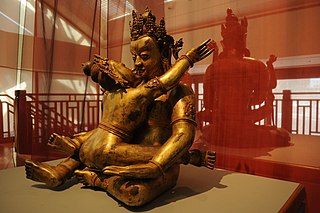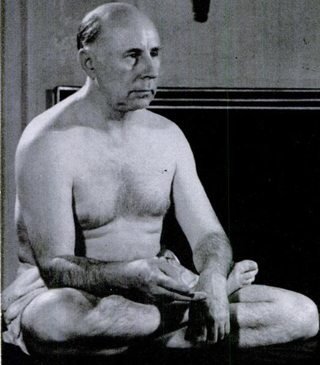Plot summary
The City of Love begins with the siege of Malacca by the Portuguese in 1510. Fernando Almenara is a Castilian trader captured in the abortive first siege of Malacca. Fernando has a secret: he is fleeing the Inquisition in Florence for his involvement with a Cabalist group there, and the invasion of Florence by the Holy Alliance in 1509 meant death to him and his friends. During the siege he is kidnapped by Daud Suleiman ibn Shams al Basri, a sharp young Arab physician and pirate based in Chittagong. Fernando joins Daud’s ship, the Shaan-e-Dariya, crewed by fugitives and renegades from all over the known world, and comes to their home port.
Chandu Sadashiva is the son of a Shaiva priest exiled from Gaur, West Bengal to the wilds of rural Chittagong. His father Bhairavdas is determined to turn him into a powerful Tantric warrior against the foreign polluters of his land, but Chandu has other ideas. He forms a secret attachment with Bajja, a tribal girl eight years older than he is, who becomes his secret role model and ideal. Things fall apart when Bajja asks Chandu’s father to initiate her into the Tantra but he tries to seduce her and she escapes. Bitterly disappointed, she vows to find enlightenment or die by fasting at the cremation ground. Desperately ill from weeks of starvation, she is rescued by the wise woman Dhumavati who undertakes to train her.
At first Fernando’s band of pirates does well from their excellent piratical harbour, but then the Portuguese come to Chittagong and change the rules with their cannon and brutal ways. The pirate band breaks up, Fernando runs from agents of the Inquisition and falls in love with Bajja deep in the forest. Bajja is being taught the Sahajiya Buddhist Tantra by Dhumavati, while Fernando has training in the Christian Cabala, and together he and Bajja teach each other about love and the lore.
Meanwhile, thirteen-year-old Chandu and his father have set out for Gaur to begin Chandu’s formal training, but they are ambushed on the way, Bhairavdas is killed and Chandu wounded in the throat and sold into slavery. Daud, who is travelling with a wandering Sufi, rescues and heals him. Chandu, temporarily speechless, is apprenticed to a blacksmith and takes the name Kalketu, having lost his Brahminical heritage. He becomes an accomplished Sufi qawwal or devotional singer.
Bajja is now wandering the countryside, teaching other Tantrics her wisdom in secret places, but she is becoming disillusioned with the way Dhumavati treats their followers. Finally Dhumavati persuades her to take part in a Tantric ritual which involves killing a child, and in disgust she gives up the life of a guru and disappears to seek her own truth. Fernando is crushed, and he returns to Chittagong where he agrees to return to Amsterdam with an old shipmate and join the Family of Love.
In the background of Sher Shah Suri’s and Humayun’s invasions of Bengal (1538–1540), Chandu sets off to look for Bajja and finds her herding pigs on top of a desolate mountain in Assam. They speak of all that has befallen them, lie down and make love.
The first part of the book is set against the spice trade from Antwerp to Indonesia, the greatest network of goods and ideas the world has ever known, and the struggle for supremacy in Chittagong between Bengal, Tripura and Arakan, and the Portuguese empire. In this cultural cauldron, established Hindu and Buddhist Tantric, Vaishnav and tribal traditions meet the three-centuries-old incursion of Islam and the dawning of contact with the West.

Tantra is an esoteric yogic tradition that developed on the Indian subcontinent from the middle of the 1st millennium CE onwards in both Hinduism and Buddhism.

Vajrayāna, also known as Mantrayāna, Mantranāya, Guhyamantrayāna, Tantrayāna, Tantric Buddhism, and Esoteric Buddhism, is a Buddhist tradition of tantric practice that developed in the Indian subcontinent and spread to Tibet, Nepal, other Himalayan states, East Asia, and Mongolia.

Dhumavati is one of the Mahavidyas, a group of ten Hindu Tantric goddesses. Dhumavati represents the fearsome aspect of Mahadevi, the supreme goddess in Hindu traditions such as Shaktism. She is often portrayed as an old, ugly widow, and is associated with things considered inauspicious and unattractive in Hinduism, such as the crow and the chaturmasya period. The goddess is often depicted carrying a winnowing basket on a horseless chariot or riding a crow, usually in a cremation ground.

Tantric sex or sexual yoga refers to a range of practices in Hindu and Buddhist tantra that utilize sexuality in a ritual or yogic context. Tantric sex is associated with antinomian elements such as the consumption of alcohol, and the offerings of substances like meat to deities. Moreover, sexual fluids may be viewed as power substances and used for ritual purposes, either externally or internally.

Shaktism is one of the several major Hindu denominations wherein the metaphysical reality, or the godhead, is considered metaphorically to be a woman.

Bengali music comprises a long tradition of religious and secular song-writing over a period of almost a millennium. Composed with lyrics in the Bengali language, Bengali music spans a wide variety of styles.

The Kamakhya Temple at Nilachal hills in Guwahati, Assam is one of the oldest and most revered centres of Tantric practices, dedicated to the goddess Kamakhya. The temple is the center of the Kulachara Tantra Marga and the site of the Ambubachi Mela, an annual festival that celebrates the menstruation of the goddess. Structurally, the temple is dated to the 8th-9th century with many subsequent rebuildings—and the final hybrid architecture defines a local style called Nilachal. It is also one among the oldest 4 of the 51 pithas in the Shakta tradition. An obscure place of worship for much of history it became an important pilgrimage destination, especially for those from Bengal, in the 19th century during colonial rule.
Neotantra, navatantra, or tantric sexuality is a Western new religious movement influenced by the Eastern esoteric spiritual traditions of Tantra. Rooted in elements of Hindu and Buddhist tantras, neotantra blends New Age interpretations with modern Western perspectives, often emphasizing the sexual aspects of these ancient traditions. While some proponents reference traditional texts and principles, many utilize tantra as a broader term encompassing sacred sexuality, occasionally incorporating unconventional practices. However, neotantra does not always adhere to the complete range of Indian tantric practices, particularly the reliance on a guru.

Pierre Arnold Bernard — known as "The Great Oom", "The Omnipotent Oom" and "Oom the Magnificent" — was a pioneering American yogi, scholar, occultist, philosopher, mystic and businessman.
Ghiyasuddin Mahmud Shah was the last Sultan of the Hussain Shahi dynasty of the Bengal Sultanate, reigning from 1533 to 1538 CE. The dynasty was founded by his father, Alauddin Husain Shah, in 1494.

Kali or Kalika is a major Hindu goddess associated with time, change, creation, power, destruction and death in Shaktism. Kali is the first of the ten Mahavidyas in the Hindu tantric tradition.
Shamsuddin Yusuf Shah was the Sultan of Bengal from 1474 to 1481. He belonged to the Ilyas Shahi dynasty and was the successor of his father, Sultan Rukunuddin Barbak Shah.

The Bengal Sultanate was a late medieval sultanate based in the Bengal region between the 14th and 16th century. It was the dominant power of the Ganges-Brahmaputra Delta, with a network of mint towns spread across the region. The Bengal Sultanate had a circle of vassal states in the Indian subcontinent, including parts of Odisha in the southwest, Arakan in the southeast, and Tripura in the east.

Jyestha or Jyeshtha is the Hindu goddess of adversity and misfortune. She is regarded as the elder sister and antithesis of Lakshmi, the goddess of prosperity and auspiciousness. She is commonly referred to as Moodevi in South India.
Hambir Malla Dev was the forty-ninth king of Mallabhum. He ruled from 1565 to 1620 AD.

Chittagong, the second largest city and main port of Bangladesh, was home to a thriving trading post of the Portuguese Empire in the East in the 16th and 17th centuries. The Portuguese first arrived in Chittagong around 1528 and left in 1666 after the Mughal conquest. It was the first European colonial enclave in the historic region of Bengal.

Gulamur Rahman Maizbhandari, also known by his sobriquet Baba Bhandari, was a Bengali Sufi preacher who succeeded his uncle, Syed Ahmad Ullah, as the head of the Maizbhandari Sufi Order, the first such Sufi order in Bengal.

The Battle of Rajmahal took place between the Mughal Empire and the Karrani Dynasty that ruled the Sultanate of Bengal in the 16th century. The battle resulted in a decisive victory for the Mughals. During the battle, the last Sultan of Bengal, Daud Khan Karrani, was captured and later executed by the Mughals.
Krishnananda Agamavagish was a noted Kulin Bengali Brahmin of Nabadwip, Nadia district origin and a renowned Pandita (Scholar) and Sadhaka of Tantra tradition who lived around 1575 CE or 1575 Saka era. He is the author of the Tantrasara.

Syed Ahmad Ullah Maizbhandari was a Bengali Sufi saint and founder of the Maizbhandari Sufi order in Bengal.















